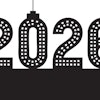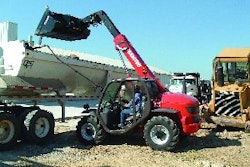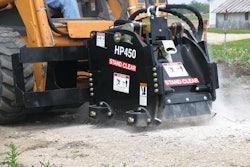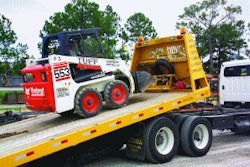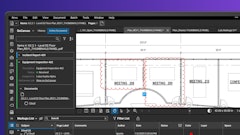Dave Crenshaw, author of The Myth of Multitasking: How 'Doing It All' Gets Nothing Done, among other books will be presenting NAPSA's keynote session Jan. 30 at National Pavement Expo. NAPSA invited him to provide this guest column.
I’d like to share a valuable principle with you. It’s something I’ve taught to many business owners and executives I’ve worked with. This principle may go against the grain of some of your beliefs about time and the best way to get things done. Because of that, I ask you to keep an open mind.
Multitasking is a myth. It just plain doesn’t exist.
Does that shock you? Multitasking has become something of a heroic word in our vocabulary. Many executives pride themselves on their ability to “multitask.” Recent job descriptions that I have seen even ask that potential employees have the ability to multitask. A current national commercial sings the praises of multitasking. However, multitasking, as most people understand it, is deceptively counterproductive. Multitasking is tremendously costly. Multitasking hurts us every time we attempt to engage in it.
I should clarify a few definitions. When I speak of multitasking as most people understand it, I am not referring to doing something completely mindless and mundane in the background such as exercising while listening to this CD, eating dinner and watching a show, or having the copy machine operate in the background while you answer emails. For clarity’s sake, I call this “background tasking.”
When most people refer to multitasking they mean simultaneously performing two or more things that require mental effort and attention. Examples would include saying we’re spending time with family while were researching stocks online, attempting to listen to this CD and answering email at the same time, or pretending to listen to an employee while we are crunching the numbers. What most people refer to as multitasking, I refer to as switchtasking. Why?
Because the truth is we really cannot do two things at the same time—we are only one person with only one brain. Neurologically speaking, it has been proven to be impossible. What we are really doing is switching back and forth between two tasks rapidly, typing here, paying attention there, checking our “crackberry” here, answering voice mail there back and forth back and forth at a high rate. Keep this up over a long period of time, and you have deeply engrained habits that cause stress and anxiety and dropped responsibilities and a myriad of productivity & focus problems. It’s little wonder so many people complain of increasingly short attention spans!
When we speak of multitasking, what we really mean is that we are switchtasking: switching rapidly between one task and another. Yet, each time we switch, no matter how quickly that switch takes place in our mind, there is a cost associated with it. It's an economic term called switching cost—and the switching cost is high.
When I shared this principle of switchtasking with a CEO of a respected national company, she was astounded. We did a budgeting exercise where we looked at how much time she was spending in a given week. In the process of budgeting her time and looking at how much time she was spending on each activity, we found that she was extremely over budget in what she thought she could accomplish in a week. The truth is, there are only 168 hours in a week, and yet she had put down that she was accomplishing 188 hours worth of work in that week! As we went through the process, we realized where the extra time was coming from. It was from the fact that she was doing research at the same time that she was spending time with her family. When we came across this, I taught her how multitasking was a myth. She was spending time either with one or the other. She was switching rapidly between the two. In reality she was rarely spending any time with her family. She was really doing business research spending in the presence of her family. There is happy end to this story, however.
The next day we met she burst into the room, full of excitement. She exclaimed, “I'll have you know that I spent time with my family last night and I didn't multitask! I got home and said let's go to dinner. My kids were surprised. But we went to the restaurant and I paid attention to them and I didn't think about anything else but spending time with my family. At first I don't think they took me seriously. After they realized that I was really spending time with them and paying attention to them they were excited and I could tell they really appreciated it.”
This CEO had come to understand that not only was switchtasking hurting her business, but it was taking a toll on her family. Once she clearly understood the truth and received some guidance on how to take action, she committed make changes. Her business, her family, and she are all better because of it.
May I offer the following “beginning steps” to help slow down the switchtasking in your life?
- Take control over technology. Your cell phone ringer (even on vibrate) doesn’t need to be on all the time. You can turn off email notification on your computer as well. Become master over the nagging beeps and buzzes by creating some silence.
- Schedule what you can schedule. Set regular times in the day and week to check your voicemail and email. Let others know that you will be using that schedule so they know when to expect a reply.
- Focus on the person. When you switchtask when dealing with a computer, you simply lose efficiency. But if you switchtask on a human being, you additionally damage a relationship. Be present, listen carefully, and make sure everything has been taken care of before moving on
© Invaluable Inc. All rights reserved. All text is protected by copyright laws. Unauthorized copying, reproduction, and broadcasting prohibited. Dave Crenshaw is author of The Myth of Multitasking: How 'Doing It All' Gets Nothing Done, has been published in six languages and is a time management best seller. His latest book, The Focused Business: How Entrepreneurs Can Triumph Over Chaos, is also a small business best seller. As an author, speaker, and business coach, Dave has transformed thousands of businesses worldwide. DaveCrenshaw.com. For more valuable tips on conquering chaos, plan to attend NAPSA’s Keynote Address by Dave at the 2015 National Pavement Expo, January 30, 2015 at 9:00 a.m. For details contact the NAPSA office at (888) 757-0130 or by email at [email protected]. Visit NAPSA’s website at www.powersweeping.com.



